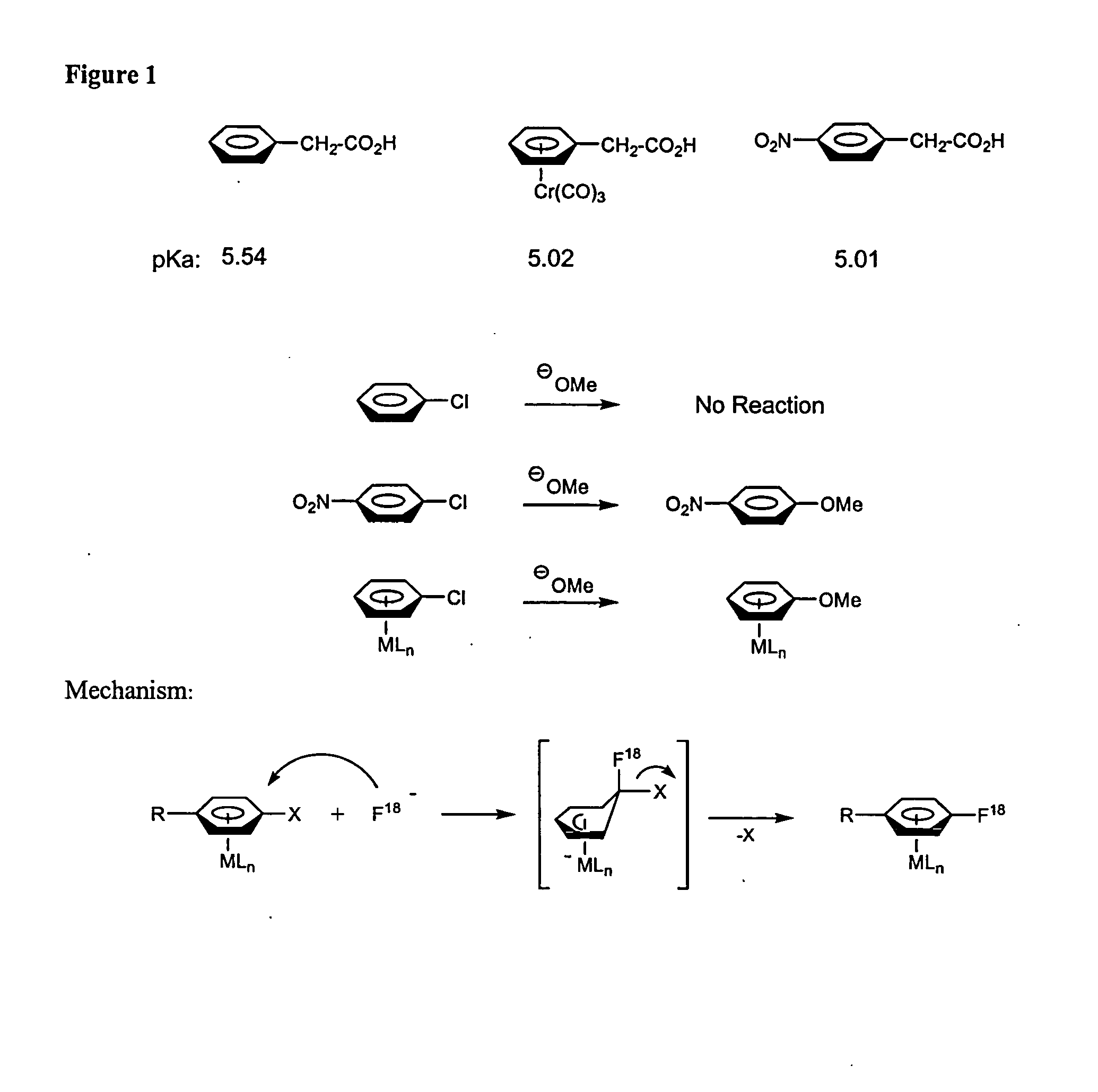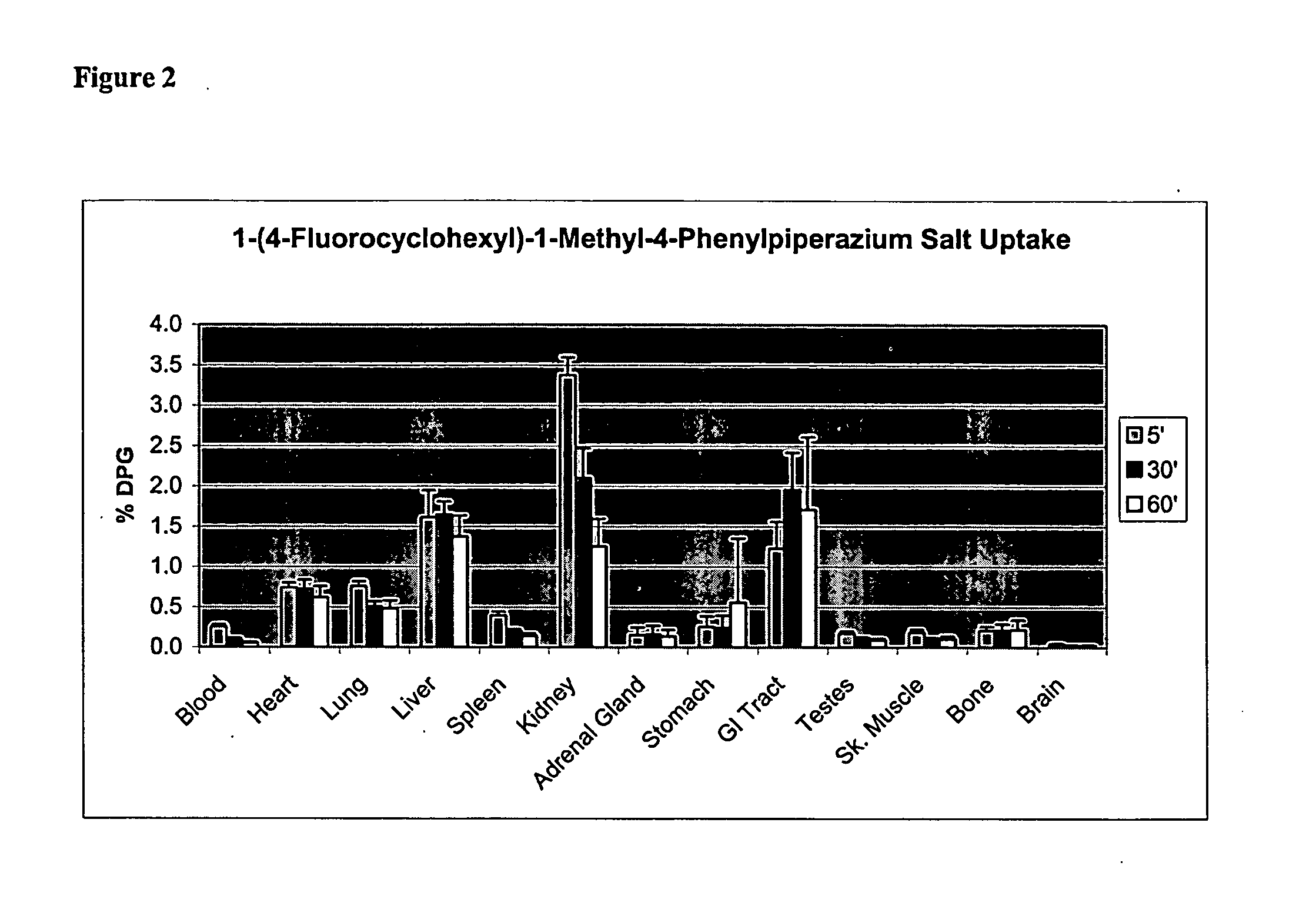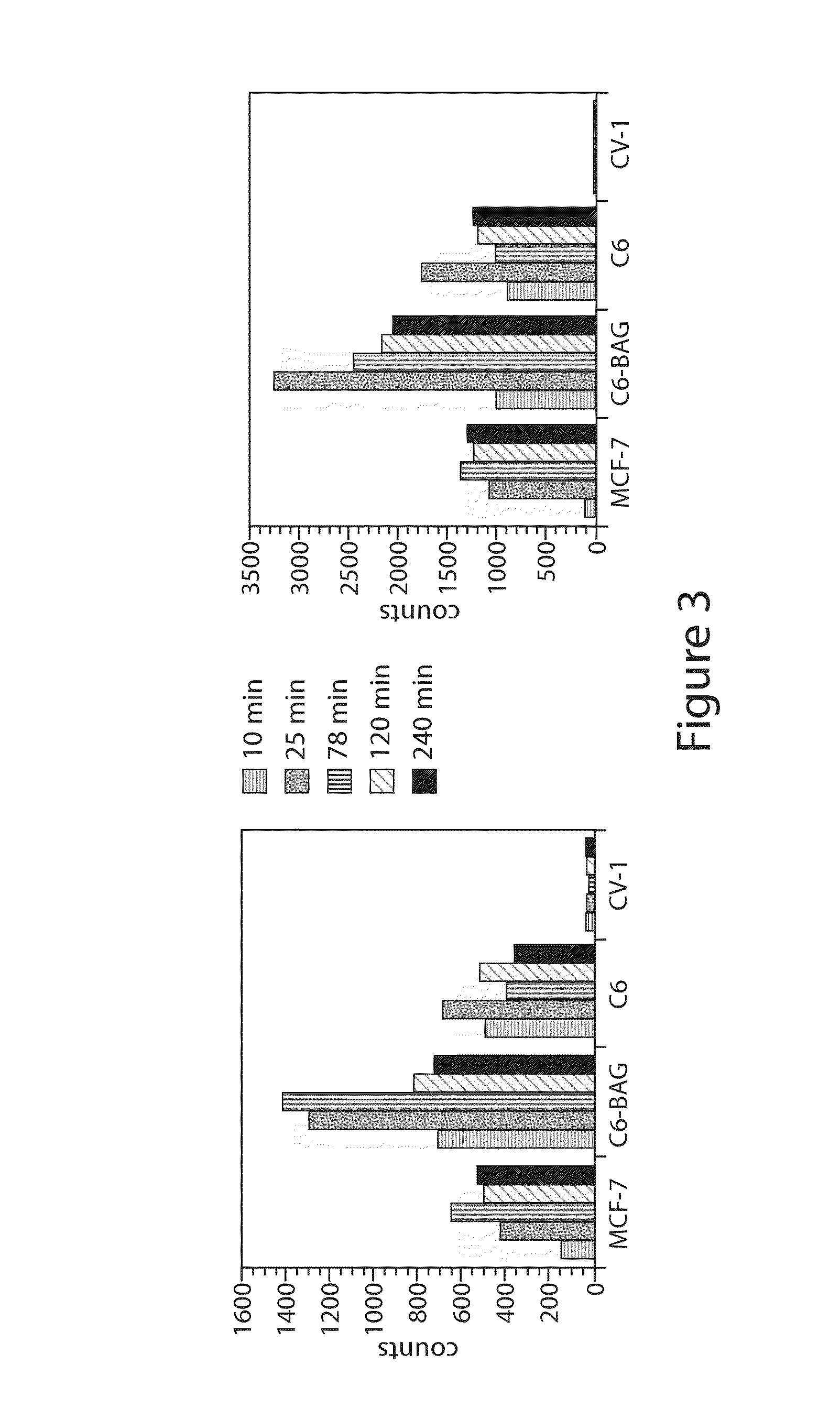Catalytic Radiofluorination
a radiofluorination and catalytic technology, applied in the field of radioisotopes, can solve the problems of difficult separation of compounds on hplc, lower achieve the effects of low radiolabeling yield and specific activity, high yield of amines, and different properties
- Summary
- Abstract
- Description
- Claims
- Application Information
AI Technical Summary
Benefits of technology
Problems solved by technology
Method used
Image
Examples
example 1
Synthesis of precursor 4-nitrophenyltriphenylammonium nitrate
[0693]
[0694]Triphenylamine and 1,4-dinitrobenzene (1 eq) are heated in DMSO under pressure (stainless steel reactor) at 200° C. for 6 h. The ammonium salt is purified by recrystallization.
example 2
Synthesis of [18F]FTPN
[0695]
[0696][18F]FTPN is prepared from 4-nitrophenyltriphenylammonium nitrate and [18F]fluoride by nucleophilic aromatic substitution. A Wheaton 5-mL reaction vial containing fluorine-18 in 0.5 mL of 18O-enriched water and 100 μL of ammonia hydroxide is heated at 120° C. and water is evaporated to dryness with the aid of a nitrogen gas stream. The contents are dried by the addition of 1 mL of acetonitrile followed by evaporation of solvent using a nitrogen flow. This process is repeated three times. A 100 μL solution of the labeling precursor in dry DMSO was added to the vial containing the activity. The sealed reaction vial is heated at 200° C. for 10 min, cooled to 25° C., and the solution is diluted with 0.5 ml of 0.1M Ca(NO3)2. The solution is loaded onto a C-18 SepPak (Waters, Milford, Mass.) and eluted with water (10 mL) to remove unreacted fluoride and DMSO. The crude product is eluted from the SepPak with methylene chloride (1 mL) and dried with sodium ...
example 3
Synthesis of precursor 4-N,N,N-trimethylammoniodiphenyl sulfone
[0697]
[0698]4-Dimethylaminophenyl sulfone is prepared using the method of Baarschers, W. H [Can. J. Chem. (1976), 54(19): 3056]. Phenyl benzene sulfonate is added to an ether solution of dimethylanilinyllithium prepared from dimethylaniline and n-butyllithium at 25° C. 4-Dimethylaminophenyl sulfone in methylene chloride at 25° C. is treated with 1.1 equvilence of methyl trifluoromethanesulfonate. After stirring for 16 hr, ether is added and the precipitate is removed by filtration.
PUM
| Property | Measurement | Unit |
|---|---|---|
| energy | aaaaa | aaaaa |
| temperatures | aaaaa | aaaaa |
| reaction temperature | aaaaa | aaaaa |
Abstract
Description
Claims
Application Information
 Login to View More
Login to View More - R&D
- Intellectual Property
- Life Sciences
- Materials
- Tech Scout
- Unparalleled Data Quality
- Higher Quality Content
- 60% Fewer Hallucinations
Browse by: Latest US Patents, China's latest patents, Technical Efficacy Thesaurus, Application Domain, Technology Topic, Popular Technical Reports.
© 2025 PatSnap. All rights reserved.Legal|Privacy policy|Modern Slavery Act Transparency Statement|Sitemap|About US| Contact US: help@patsnap.com



